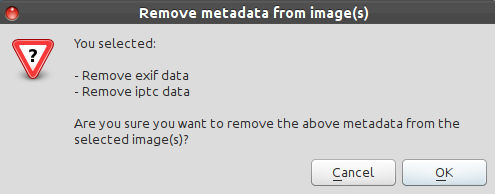
#DIGIKAM FACE METADATA PROFESSIONAL#
I’ve worked as a professional product photographer in addition to my own personal photography practice, and I have to admit that before I finished these reviews, my personal photo collection was a mess. Hi, my name is Thomas Boldt, and I’m an avid photographer.
#DIGIKAM FACE METADATA SOFTWARE#

They provide more basic flagging and filtering of your collection, but you can’t argue with the price.
#DIGIKAM FACE METADATA FREE#
If you’re a casual photographer looking for a great photo manager on a budget, you may want to look at the free alternatives I tested. It has a solid set of filters and tags, it’s easy to use, and it’s quite responsive when handling photo collections with tens of thousands of high-resolution images. So what’s a photographer to do?Īfter some careful testing using my own roughly-organized photo collection, I’ve selected ACDSee Photo Studio as the best photo management program, no matter whether you’ve got a few images to sort through or thousands. Your computer’s operating system may include a very basic tool for organizing your images, such as the macOS Photos app, but it’s often hard for a simple program to keep up with the incredible number of images created in the modern world. If you love your smartphone or digital camera, you’re probably taking hundreds of photos all by yourself each year, and if you’re a professional photographer that photo collection will grow even faster.Īs a result, many photographers find themselves stuck with a huge number of images and no good way to sort through them. Instagram alone is responsible for roughly 95 million photos a day, and that doesn’t count all the images that are sent to different services, shot with DSLRs, or never uploaded. If you do not do this, you may risk that other applications incorrectly interpret the image orientation and it would result in the face regions/rectangle be incorrectly displayed.Every day, the world takes an incalculable number of photos. Test with a subset of images first to make sure the metadata is readable on other applications.Īlso, prior to applying face regions to images you should also ensure that the image orientation corresponds to the Exif Orientation (Digikam provides a way to do this automatically). I strongly advise that prior to writing metadata back to your photos you ensure you back them up. I wrote a blog post on the subject a while ago. There are also ways two convert/copy from one XMP schema to another using exiftool, which supports (MS People Tags, MWG Regions, and IPTC Regions). There are not many applications which support it either. At present, Digikam does not support this schema. I should also point out that in 2019, the IPTC created a new schema for Image Regions, including Face Regions.


These two schemas are well documented, but support may vary among other photo viewing and managing software.

To the best of my knowledge, the current release of Digikam supports writing back to 2 XMP Schemas: Microsoft People Tag Schema and The Metadata Working Group (MWG) Face Region Schema. When the writing "Face Tags (including face regions)" checkbox is enabled, the People Names and Face Region area is written to the XMP (Extensible Metadata Platform) image metadata. You can tweak how Digikam writes back the Image Tags under the Advanced tab. You can enable Digikam to write People Tags back to the file metadata under Configure Digikam -> Metadata -> Behavior and selecting Face Tags checkbox as well as Image Tags.ĭigikam writes back the names of the people as Image Tags (when Image Tags are selected). The latest release (7.2.0) included a couple of improvements on this subject.


 0 kommentar(er)
0 kommentar(er)
